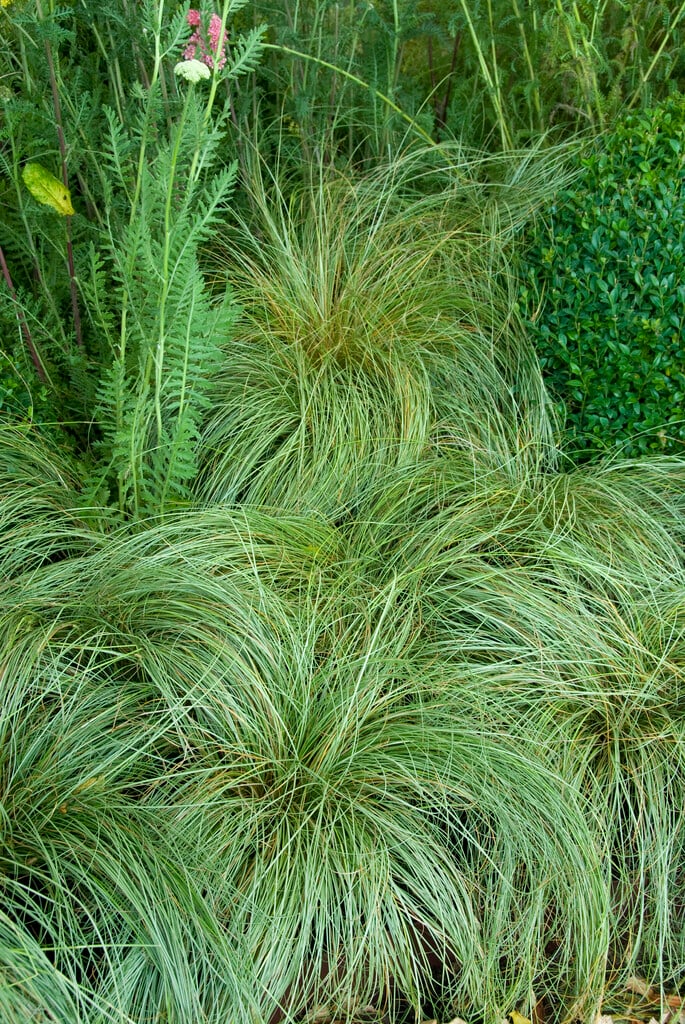Size
Ultimate height
0.1–0.5 metresTime to ultimate height
2–5 yearsUltimate spread
0.1–0.5 metresGrowing conditions
Moisture
Moist but well–drained, Poorly–drainedpH
Acid, Alkaline, NeutralColour & scent
| Stem | Flower | Foliage | Fruit | |
| Spring | Cream Yellow Green | |||
|---|---|---|---|---|
| Summer | Brown | Cream Yellow Green | ||
| Autumn | Cream Yellow Green | |||
| Winter | Cream Yellow Green |
Position
- Full sun
- Partial shade
Aspect
South–facing or West–facing or East–facing
Exposure
Exposed or Sheltered Hardiness
H4Botanical details
- Family
- Cyperaceae
- Native to GB / Ireland
- No
- Foliage
- Evergreen
- Habit
- Clump forming
- Genus
Carex can be deciduous or evergreen, rhizomatous or tufted perennials, with triangular stems bearing linear or strap-shaped leaves and short or long spikes of tiny green or brown flowers
- Name status
Accepted
How to grow
Cultivation
Although it tolerates full sun, it performs better in moist soil that is partially shaded. Benefits from a compost mulch in spring. Can be semi-evergreen in the coldest edges of its range
Propagation
Propagate by division or by seed sown in cold frames
Suggested planting locations and garden types
- Gravel garden
- Cottage and informal garden
- Patio and container plants
- Low Maintenance
- Ground cover
- Flower borders and beds
Pruning
No pruning required. Remove dead or faded foliage in spring
Pests
May be susceptible to aphids
Diseases
Generally disease-free
Get involved
The Royal Horticultural Society is the UK’s leading gardening charity. We aim to enrich everyone’s life through plants, and make the UK a greener and more beautiful place.
